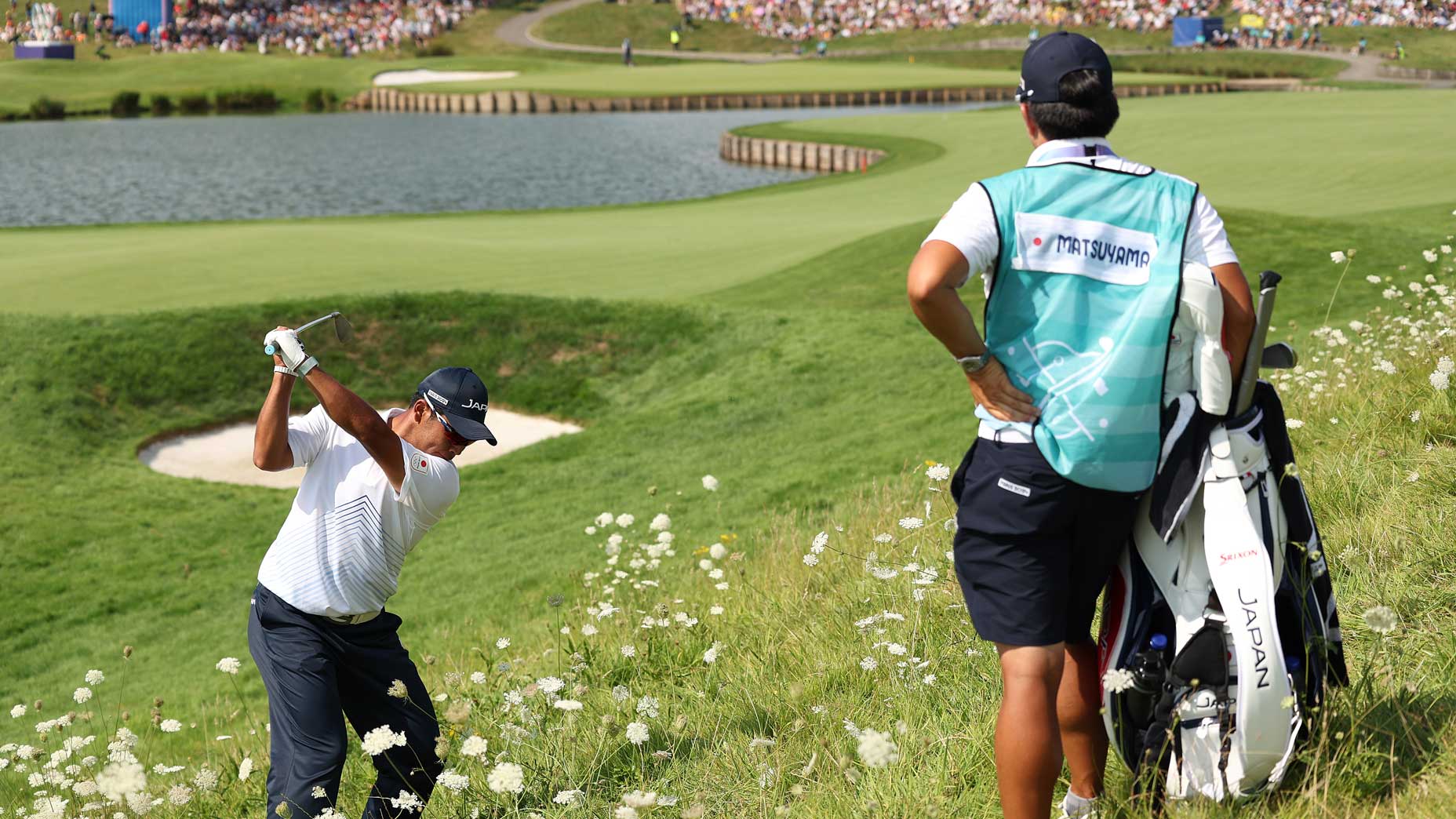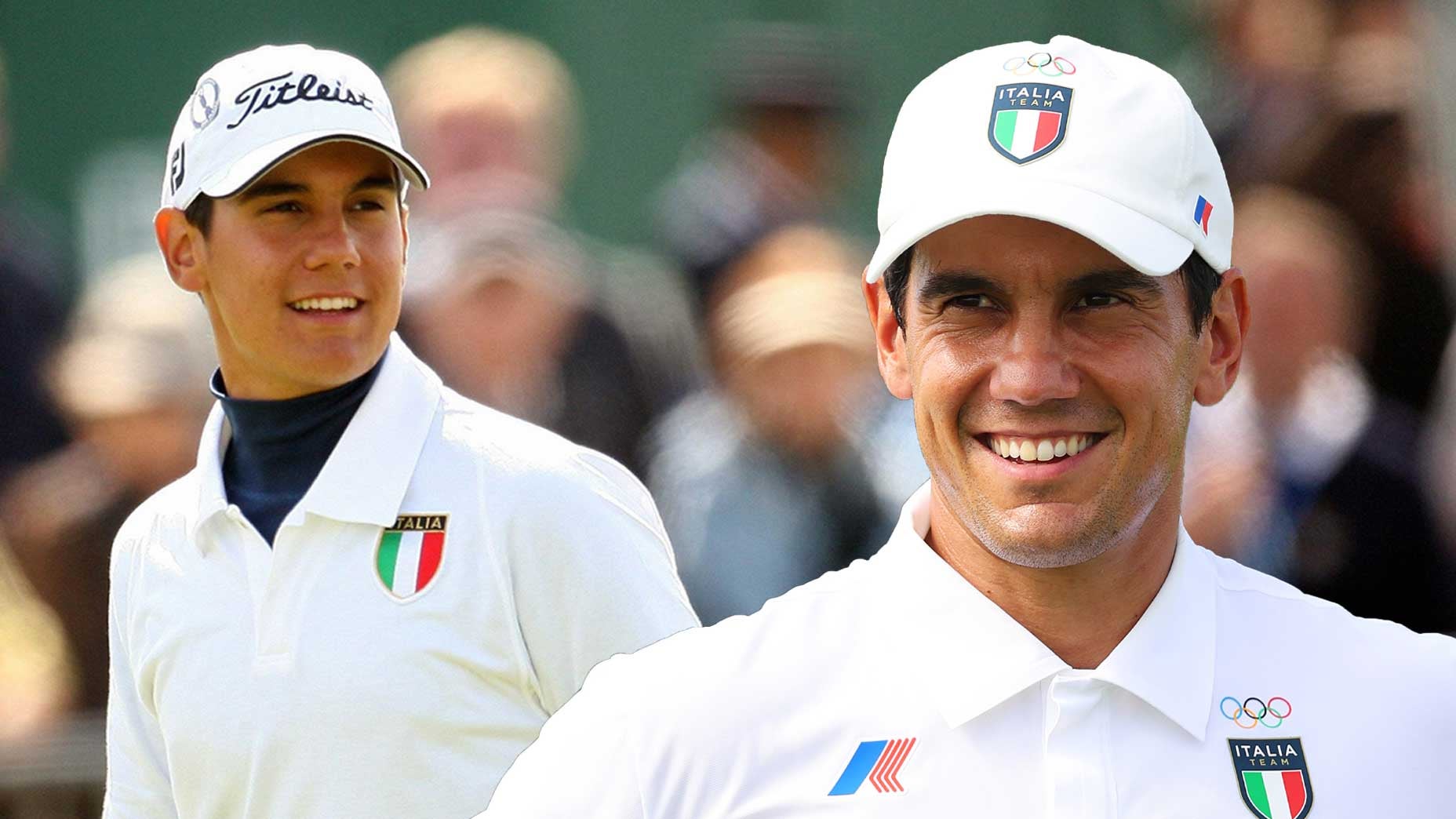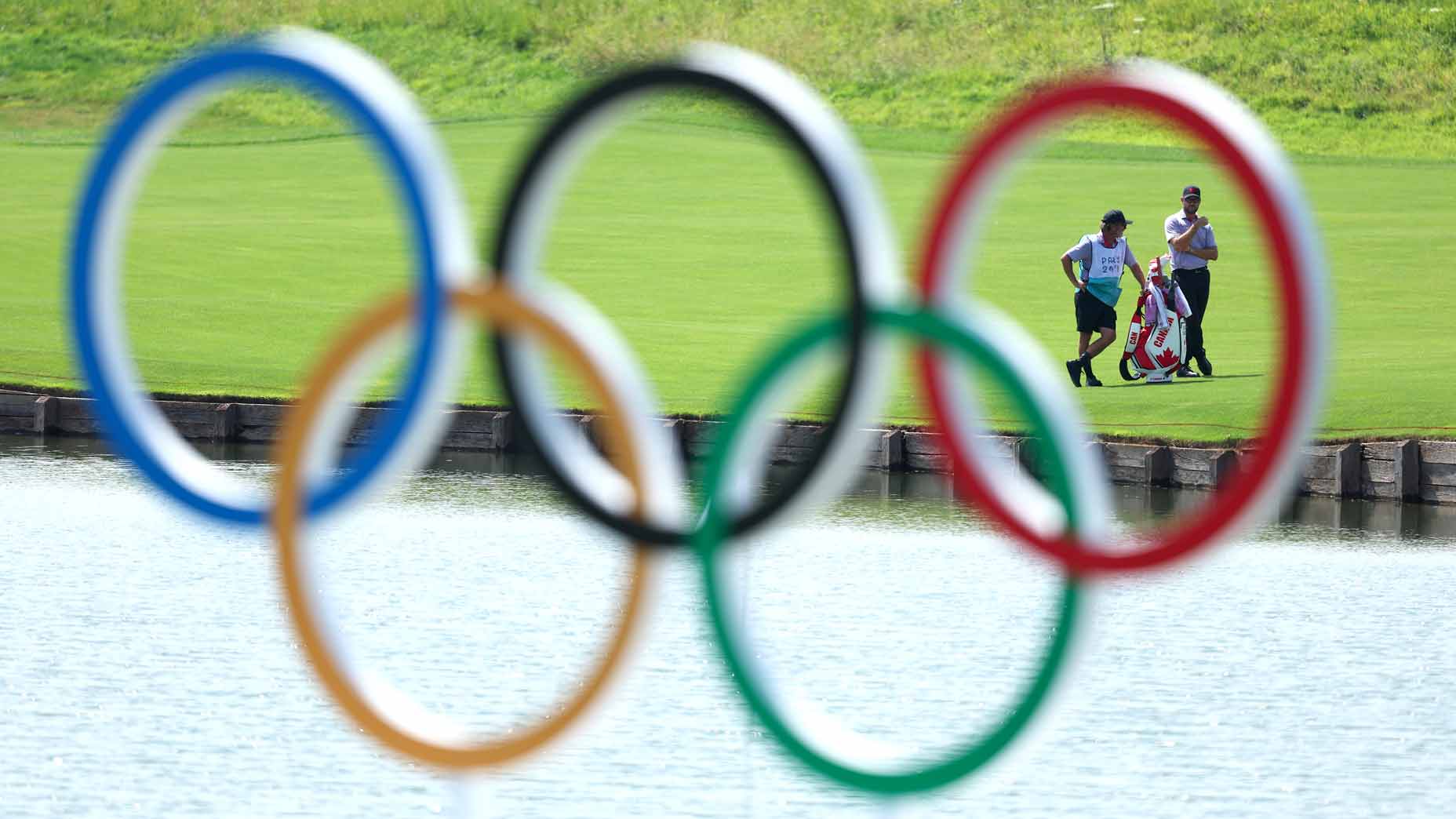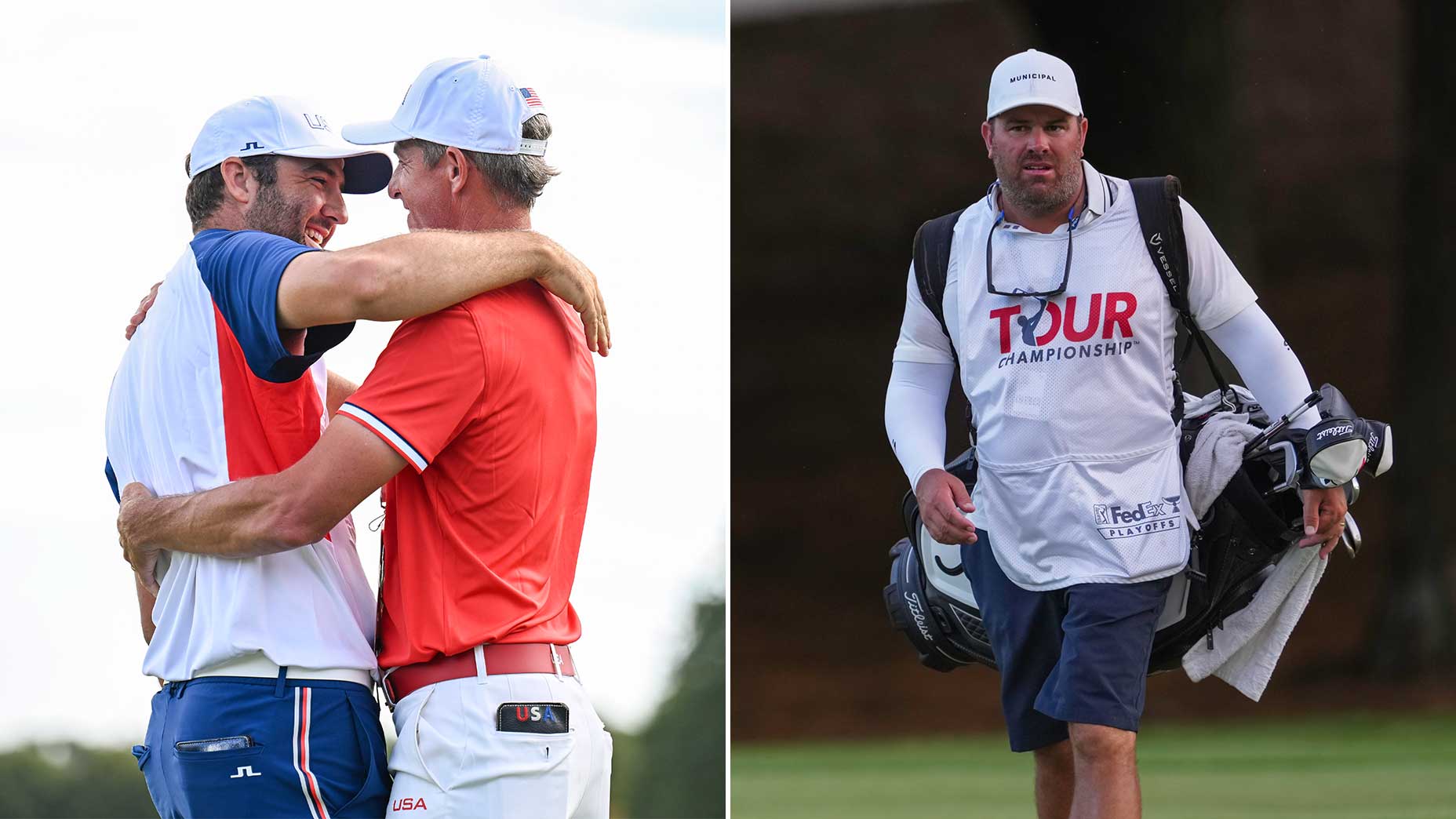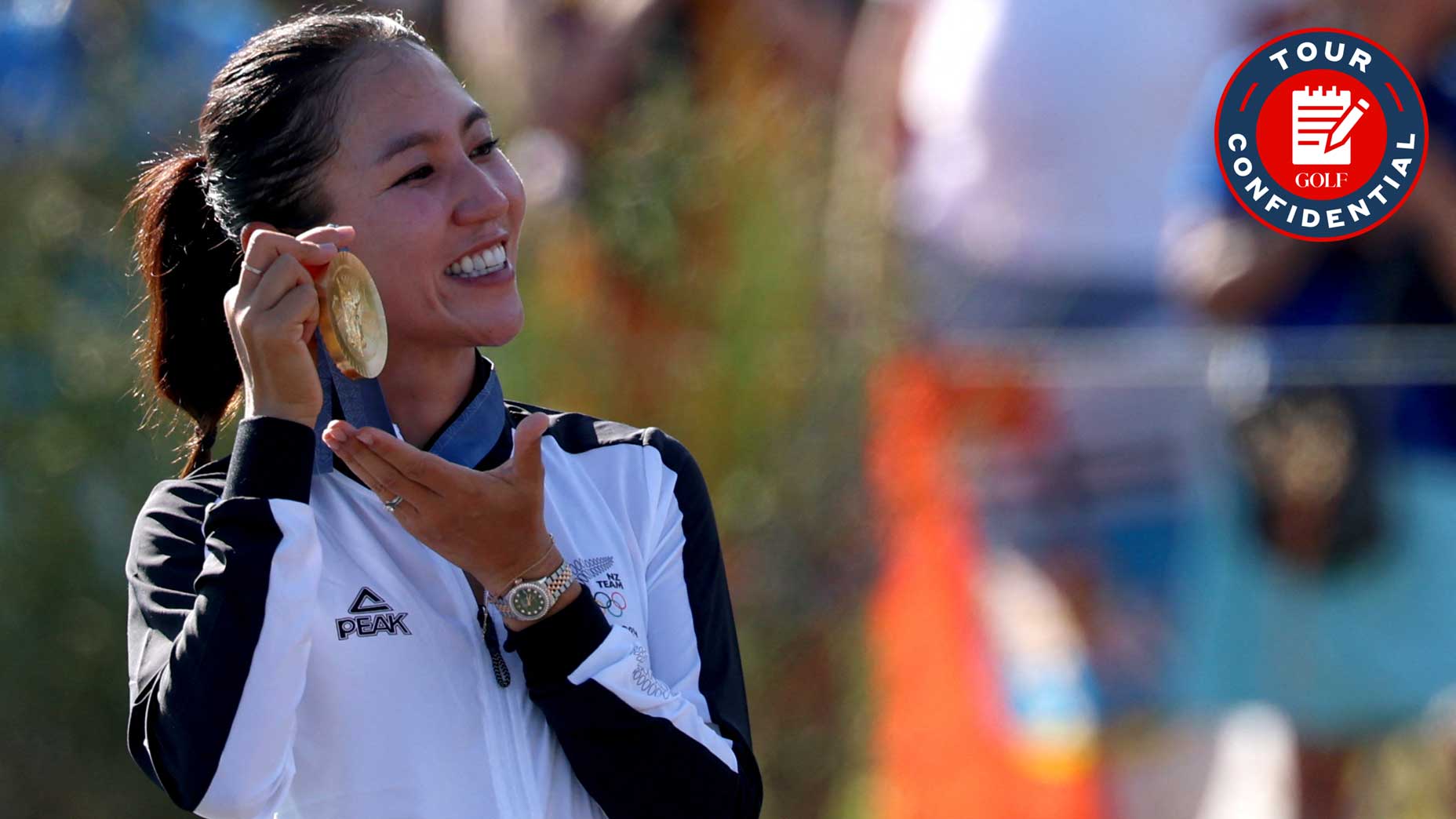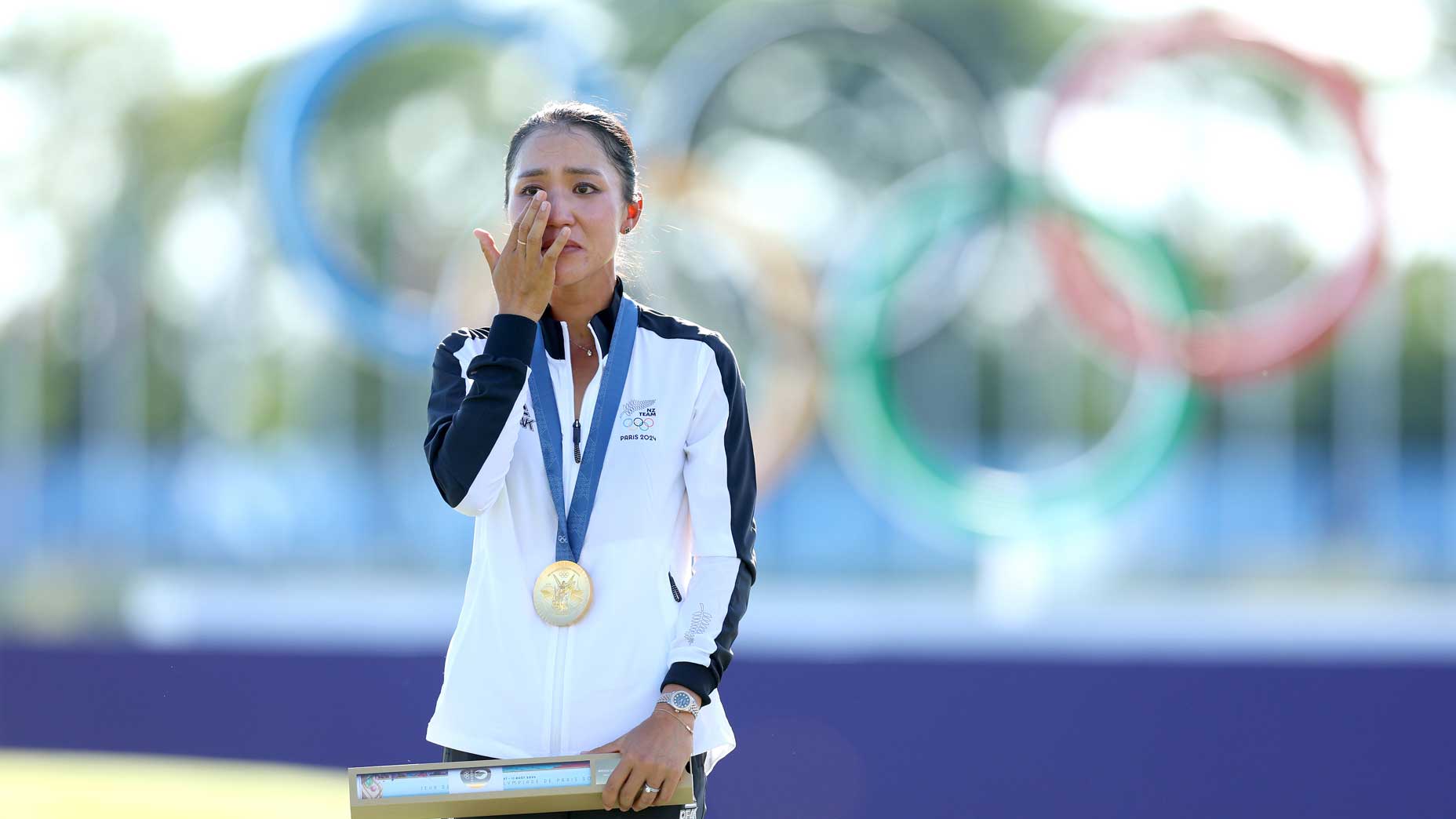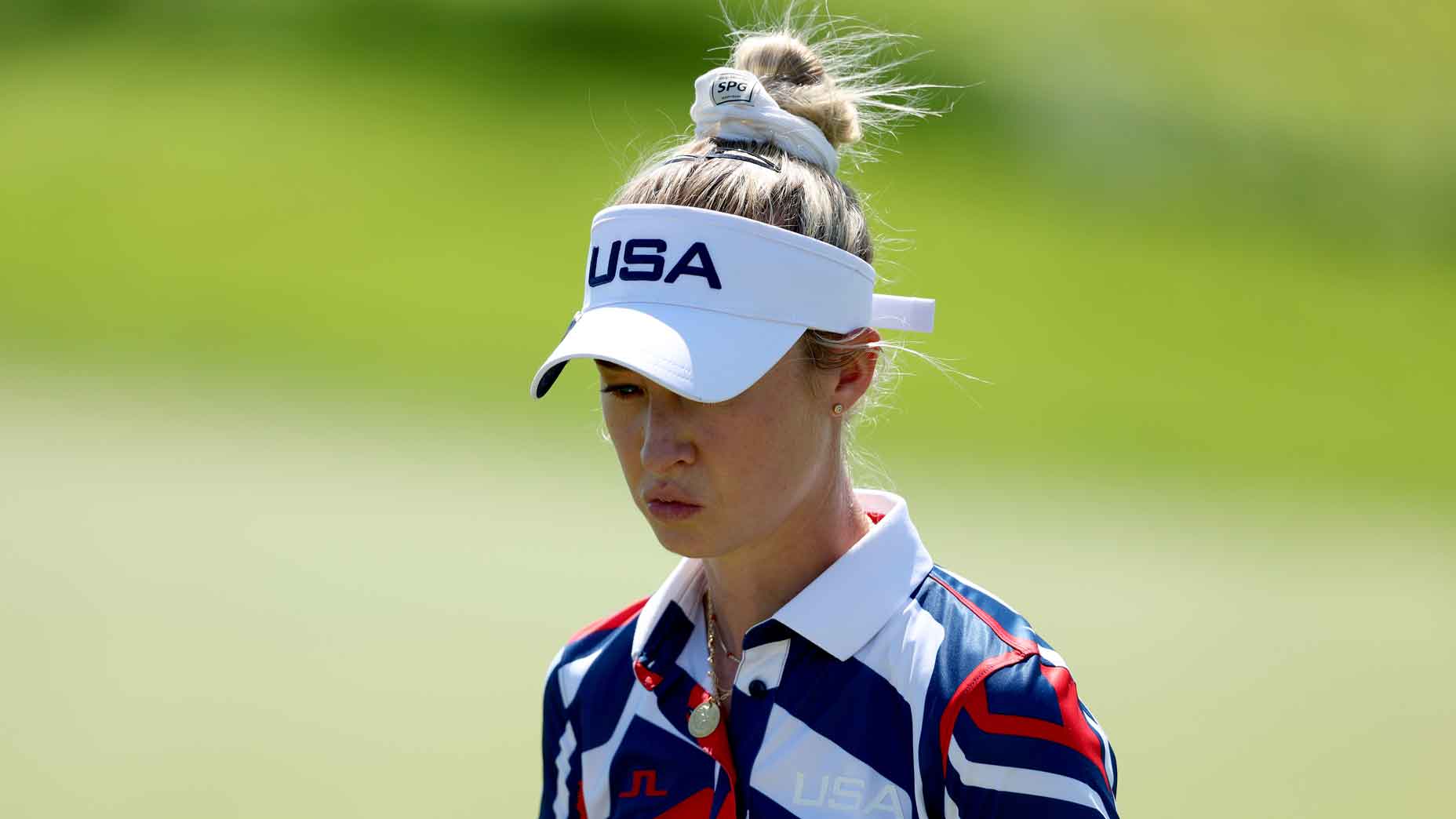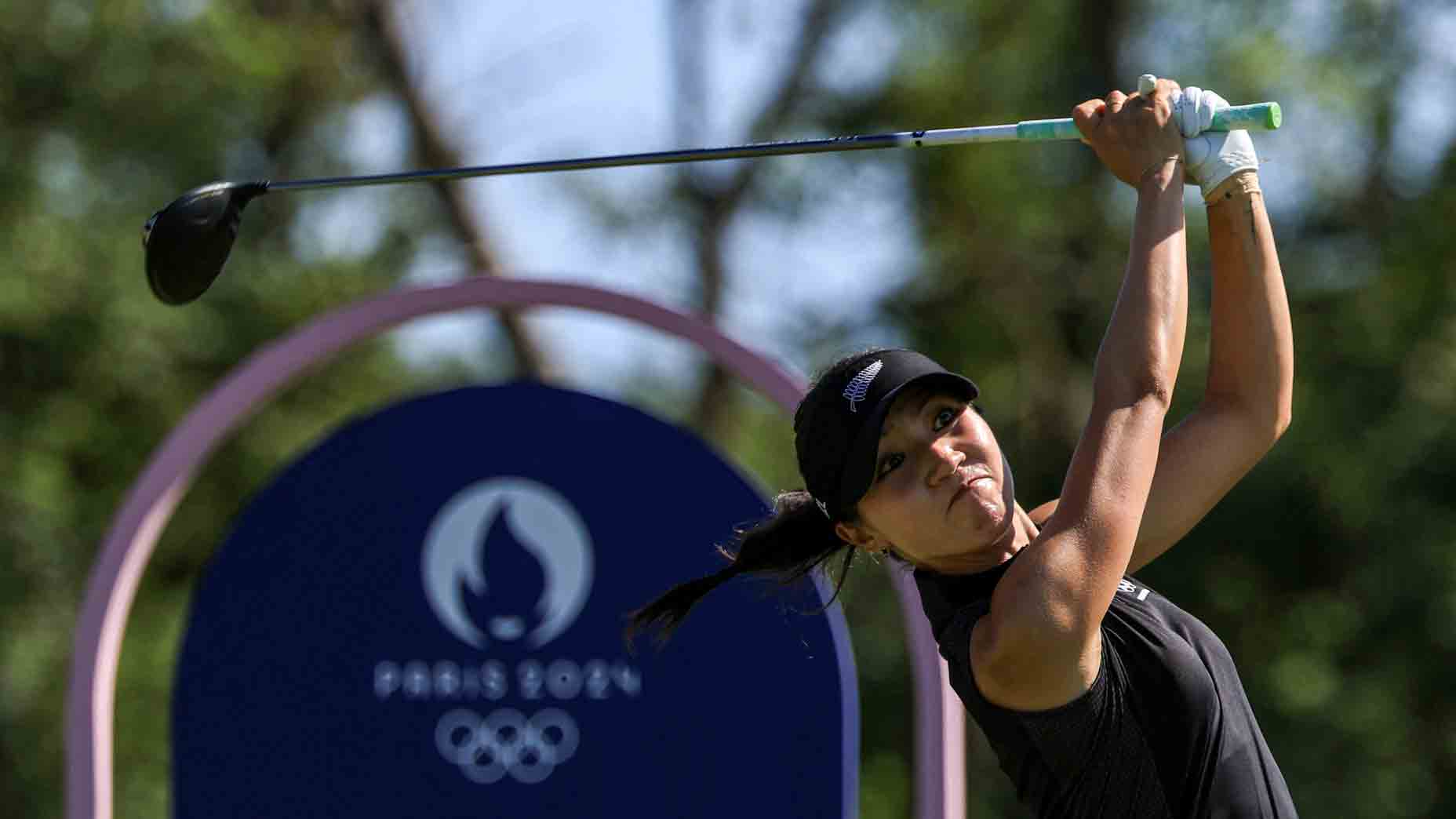SAINT-QUENTIN-EN-YVELINES, France — It was such an innocent thought I had, as a bystander watching golf from the media center, wayyy outside the ropes. Man, that finishing hole sure looks difficult.
You really wouldn’t want to need a birdie 3 on that hole to make the podium, would you? I wanted to ask a player. The only one in front of me was Sami Valimaki, the 26-year-old Finnish lad. He quickly took it in a different direction.
“It’s going to be tough to even make a four from there if you’re leading,” Valimaki said. Ain’t that the truth.
No hole at Le Golf National is playing as difficult as its finishing hole this week, an ominous element for the field of players in pursuit of a medal this weekend. A birdie could bring heroics. A par could hold on for glory. But all kinds of bogeys await. All kinds of bogeys is what we’ve seen.
The 18th is a 471-yard par-4, with a water hazard that cuts across the front of the green. It could be a cut-driver off the tee for anyone who is confident. Those pulling 3-wood are telling you something — they’re not completely comfortable with the water hazard creeping in.
During a practice round match, teammates Scottie Scheffler and Wyndham Clark both found the drink and lost their match against Collin Morikawa and Xander Schauffele just a few minutes later.

The reason that water comes into play is because the rough up the right side is particularly thick. So thick that balls that find it end up burrowing into the grass and making it difficult to advance to the green, over the water. We’ve seen plenty of players forced to layup from the rough, accepting they’ll be bound for bogey. Or much worse.
Matthieu Pavon knows this course — and that hole — as well as anyone. The Frenchman has competed in six French Opens here, and now one Olympics. It’s not going well, thanks to the 18th hole, which he has played three over this week after triple-bogeying it Saturday.
“This is almost maybe the toughest hole I have ever played because you have two very demanding shots to hit,” Pavon said. “First, like the tee shot, it’s quite tight — if you miss in the rough you’re going to be in a tricky position — and then the second shot, depending where is the pin, it’s a tough one, too.”
After lobbying for Olympic golf, he lost his game. Now, he’s back chasing medalsBy: Sean Zak
Tapio Pulkkanen sure knows that. The Finnish man was in great position through 35 holes, six under and ready for a late tee time. When he found the rough off the tee, he hacked it forward, still in the rough. His third shot landed in the center of the hazard. After taking a drop, his fifth shot didn’t clear the hazard again. Another drop, then pitching on with his seventh stroke. Two putts for a quintuple-bogey 9 and a much earlier tee time.
It isn’t just that the hole is playing tough, it’s that it really has no comparison on the entire course. The 18th is playing a full quarter-stroke harder than any of the others, 4.6 strokes on average. Viktor Hovland has doubled it twice. Jason Day has doubled it once. Hideki Matsuyama is somehow contending after doubling it Friday. Through three rounds, only 19 birdies had been made, compared to 26 doubles or worse.
All of which sets us up for Sunday’s medal sprint. The course has been extremely scoreable through three days, and it is setting up to be similar on Sunday. At least through 71 holes, when players will turn around to see the only grandstand on the property, and the Olympic rings beneath it. Under all that, of course, is the 40-yard-wide fairway. Hit it first. Then you can start thinking about the podium.
